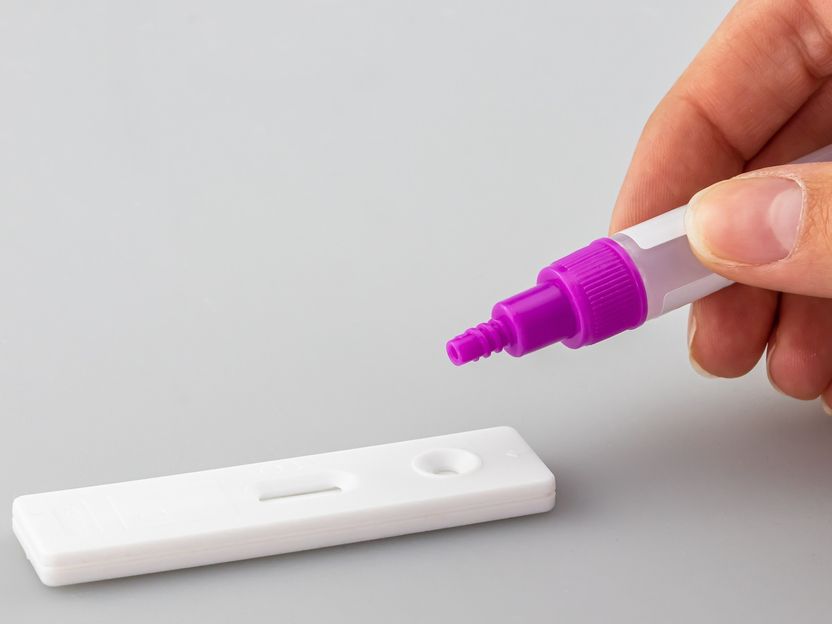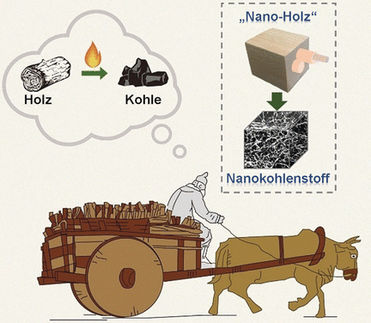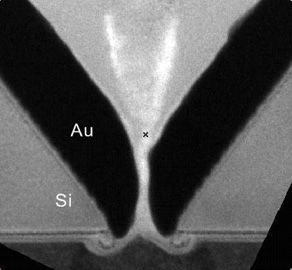Accurate rapid tests made from smart graphene paper
The potential range of applications covers virtually all chemical, biological and medical analyses that can be performed in aqueous solutions
A team led by ETH Zurich chemical engineers Chih-Jen Shih and Andrew deMello have developed a rapid test system made of smart graphene paper. It only costs a few cents per test strip, is easy to use but is as accurate as lab measurements. The approach will impact more than just disease monitoring.

Symbolic image
pixabay.com
Rapid pregnancy and COVID-19 tests have a great advantage over other medical analyses: they are so simple that anyone can perform the test themselves, virtually anywhere. This is due to the robust principle behind these microfluidic methods, whereby aqueous solutions diffuse through a paper test strip with the aid of capillary forces. During this process, antibodies capture the target substances, such as virus particles or pregnancy hormones, and concentrate them at a desired location. A staining system then slowly makes the increasingly concentrated target substance visible as a stripe.
As simple and reliable as this basic principle is, visual assessment of the results can be difficult. The question of whether we really can see a line or whether we’re just imagining it has probably been on all of our minds at least once since the outbreak of the COVID-19 pandemic.
This is exactly where the invention of the ETH team comes in. They have found a way to form conductive electrodes directly inside the test strip paper. As the target substance is captured, it triggers an electronic signal. This makes measurements much faster, more sensitive and more accurate.
Making low-cost paper technology better
Chih-Jen Shih and Andrew deMello share a passion: “Our biggest incentive is to improve basic chemical and biological experiments in ways that create new scientific opportunities.” This is exactly what their research groups have now succeeded in doing with the rapid tests. A host of analytical applications benefit from the researchers’ combining simple and cost-effective paper-based microfluidics with the sensitivity and accuracy of electronic measurement techniques. From patients being able to monitor blood biomarkers themselves, to soil, air and water sampling in the field, to disease testing in remote parts of the world in a matter of minutes – the potential range of applications covers virtually all chemical, biological and medical analyses that can be performed in aqueous solutions.
A combination of skills is the key
Previous attempts to equip low-cost paper chemistry with detection electrodes have been hampered by a fundamental property of conductive materials: in principle, electrical conductors hardly interact with water and act as a barrier when it comes to the flow of sample and reaction mixtures in a paper strip. Overcoming this hurdle and developing the technology into a reliable process that also works in less developed areas of the world called for a combination of skills, deMello says. For the new rapid test, the ETH researchers therefore pooled their expertise. From Shih’s group came the know-how to generate conductivity directly in the paper, while deMello’s group brought their knowledge of microfluidic systems to the table.
A laser decomposes cellulose to pure carbon
The basis for this invention is the use of a laser to convert the sugar polymers that make up the cellulose in the paper into graphene. This special form of carbon is conductive and is considered an electronic material of the future.
During laser conversion, the cellulose molecules are decomposed into their elements, carbon, oxygen and hydrogen, in a process comparable to the caramelisation of household sugar. However, while heating sugar in a pan for a long time leaves behind only ordinary carbon, which does not conduct electric current, the ETH Zurich scientists were able to use the laser to reorganise the carbon atoms of the cellulose into conductive graphene.
Clever tuning of the laser energy makes the difference
Producing graphene in cellulose paper alone wouldn’t do the trick, though, because – like virtually all other conductive materials – this miracle material is hydrophobic: it repels water, which means water cannot simply flow through it. However, by cleverly tuning the laser energy, the researchers can control the decomposition of the cellulose to graphene such that not only is the original porosity of the cellulose preserved, but individual oxygen groups of the cellulose remain intact on the surface of the graphene areas.
These oxygen groups can interact with water molecules and thus ensure wettability in the electrodes, practically on a par with the rest of the paper. What’s more, reporter molecules can also be chemically bound to these oxygen groups. In this way, an electronic signal is generated as soon as a virus particle interacts with a detection antibody on the electrode.
Developing the science into a practical product
The researchers tuned the laser energy in two main ways: They treated the paper with flame retardants to prevent the laser energy from completely charring or even burning the cellulose. In addition, they reduced the laser power and instead used multiple pulses, which put less energy per unit area into the paper.
However, Shih and deMello didn’t content themselves with scientifically proving the principle of paper electrodes. Rather, their aspiration was to develop a product that could be used in practice. To this end, they implemented the principle in practical applications and massively simplified the production of the analytical paper strips. It already takes just 90 minutes to produce 176 sensors from one A4 sheet of paper – at a unit cost of only 0.02 dollars.
An ideal environment for interdisciplinary innovations
For Shih, the environment at ETH Zurich played a decisive role in the invention: “We’re part of the Department of Chemistry and Applied Biosciences. As engineers, we’re directly inspired by the cutting-edge research being done all around us.”
How the two chemical engineers will make their invention available to society and market it has yet to be determined. Given the enormously wide range of possible applications, a licensing model might make sense. But in this regard, too, the scientists can rely on the environment at ETH Zurich. deMello says: “The people at ETH transfer have a lot of experience in protecting intellectual property and negotiating licensing agreements.”
Regardless of how the invention will find its way into concrete products, the bottom line is that countless people around the world are likely to benefit from this ETH innovation. From more effective medical therapies to more efficient agriculture and seamless infection monitoring – embedding electrodes directly into the test strips takes the capabilities of paper fluidics to a new level.






















































